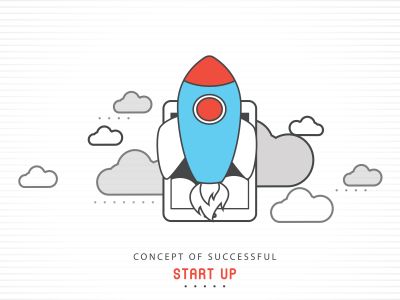5 Types of Business Growth and Their Pros and Cons

When you started your business, you might’ve thought about growing your business in the future.
It was probably a distant plan, but it’s at least something that you would’ve thought about and considered. Now that you’re finally at the point where you can consider growing a business, it might be daunting when you realize that there are so many different ways to grow your business.
Thankfully, the internet has given us all many opportunities to learn from successful entrepreneurs, but following in their footsteps isn’t always the right decision.
Trends will always change and what worked for them might not work for you. For instance, some entrepreneurs decided to grow their businesses by tackling other industries.
Some simply just expanded what they already had, and others focused on pouring money into research to build better products in the future. With so many different ways to grow, you might be wondering what the best option is.
Sadly, there’s no correct answer and there’s no simple recommendation. So instead, we’ll be going through several different examples of business growth, how they relate to each other, and their pros and cons to help you decide on what type of growth your business needs.
By taking the next step, you’ll expose your business to a wider audience, attract more customers, and ultimately become more successful.
#1 Physical Expansion
The most basic form of growth comes with business expansion. If you’re currently running a retail store, restaurant or other similar business with a building, then you might consider expanding your brand to another location.
You could open up another store closer to the city, you could open one in another country, or you could move to another city altogether. If your business is run from an office, then you might consider opening up a second office, a warehouse or even a factory to produce your items more quickly and efficiently.
Physical expansions come with a lot of positive effects. By building a new store, you reach a wider audience and you also contribute to the economy by providing more jobs.
A store typically only hires a few employees, but if you start another office, then you’re potentially opening up hundreds of jobs to the public. It’s also a fantastic way to be more efficient.
For example, opening a factory means you can take full control over your production process. You can choose whatever materials you want to use, you can control the price you pay to manufacture something, and you can even modify the process whenever you see fit.
However, you have to consider consulting with an engineer if you want to build any kind of factory, warehouse or office.
This is because there are hundreds of different factors that go into building something large, such as the earth around the proposed building site, the length of time it takes and even the local community’s tolerance towards it.
It goes without saying that there are far too many factors for a single businessman to take note of, so only consider physical expansion if you’ve got employees to help you out and money to hire experienced contractors that know what they’re doing.
#2 Digital Growth

The next obvious avenue of growth is to expand digitally instead of physically. In other words, you’re expanding your online presence to reach a larger audience, one that potentially covers the entire world.
The biggest advantage of the internet is the fact that it reaches the entire world. As long as you’re discoverable by Google and you have some presence on social media sites, you could turn the entire world into your audience within just a few short weeks.
Opening up your business to the world is far easier now than it was 20 years ago. The internet has helped us greatly and it feels like it’s almost required to run a business.
Not only does a website help to give your customers contact details and a brief rundown of your company, you can expand it with various features as well.
For instance, you could accept online orders across the world. This will open up your business to the global market, making it a fantastic option if you’re targeting a niche industry with a specialized product that is unique to your business.
It also exposes your company, making it easier to find. More people will talk about it, they won’t feel limited by their location because they can simply order from your website and it ultimately grows your business.
However, maintaining an online presence can be difficult. Not only can a single mistake ruin your reputation, it’s also possible that your website won’t gather attention because it’s not good enough.
Your social media account might not get any attention because you’re not popular enough, and because you’re competing in a global market that everyone with an internet connection has access to, it can be difficult to stand out from the crowd if you don’t specialize your products or pour money into marketing.
#3 Diversify Your Brand
Another fantastic way to grow your business is to diversify your brand. This is what many entrepreneurs like Richard Branson did when they first started building up success.
Instead of focusing on just a single industry, they diversified their brand so that it could reach a wider audience and offer more services.
For example, you could stock and sell products that compliment your own, you could import and export new products and you could even become a content creator by writing blog posts or creating videos that relate to your product.
The biggest advantage of diversifying your brand is exposure. As a company, you want to try and get your name out there to as many people as possible, and if your brand name is used for more than just one industry, you’re almost guaranteed to turn some heads.
For instance, Michelin is known as a tire manufacturer, but they also make travel guides and they also maintain the Michelin star guide that showcases some of the world’s best restaurants.
It’s nothing to do with tires, but they pull it off and manage to attract several different audiences at the same time that can overlap.
While diversifying your brand can come with a lot of positive benefits, it’s also known to be one of the more risky business growth options due to the amount of money involved.
If you’re a transport company that also wants to tackle air travel, then you’re going to need a ridiculous amount of money just to get started. Think about all the things you need to buy: planes, hangers, space in airports—the list can continue but those are just some of the main expenses you have to worry about.
Even if you do something smaller such as supplying additional items in your store to compliment your main product, you still have to buy those items in bulk and hope they sell alongside the rest of your items.
#4 Specialize Your Product
If you’re struggling to find the funding needed to expand your business’s brand, try and focus on specializing your products instead. If you manage to target a niche with your items, then you should hold onto that specialty of yours and explore different ways to perfect it.
The best way to do this is get involved with the community.Be active on social media and join any online groups that relate to your products. You can listen to feedback, ask people what they’d like to see in the future, give them updates on your products and even respond to criticism.
The biggest advantage to this is customer loyalty.
When customers see that the company they buy from legitimately cares about their thoughts, it creates a wonderful sense of trust between the two parties and they are more likely to buy from you in the future.
Not only does it create trust, but it also creates a better product. At the end of the day, unless you’re the one setting trends, your customer will usually know more about a product than you because they use it on a regular basis and they know how to make it better for their use.
#5 Acquire a new business

Lastly, a unique and often brute-force way of expanding your business is to just purchase another business entirely.
This is common when you want to completely stop a competitor from attempting to overtake you, or when you spot potential in a new startup and want to take advantage of it. Purchasing a business can be expensive and you’ll often be forced to lay off staff from the merging company.
However, you’ll take control of all of their assets and you’ll acquire all of their customers as well.
Unfortunately, this can be expensive depending on what type of business you want to acquire, and staff from the merging company might be upset if you make too many drastic changes.
In other words, it’s a risky move, but if it goes well there’s no doubt that your business will grow exponentially and it’s a fantastic opportunity to diversify your brand.






